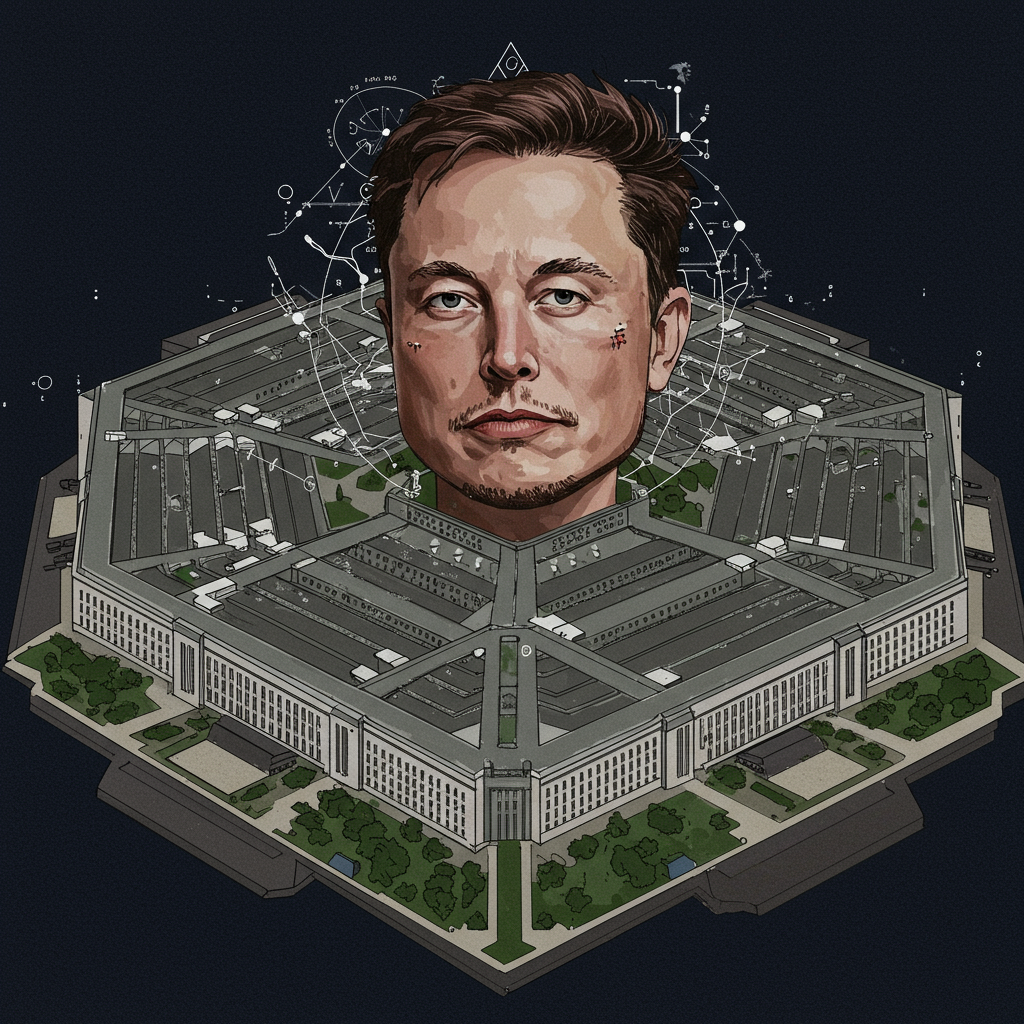microsoft is undertaking a significant workforce reduction, announcing plans to cut approximately 9,000 jobs. This move marks the tech giant’s largest layoff event in over two years. It is also the second major round of job cuts initiated by the company in recent months.
Notices began going out to affected employees on Wednesday. The reductions impact numerous teams worldwide. Key divisions affected include the company’s Xbox video game business. The global sales division is also facing significant cuts. This broad impact signals a wide-reaching organizational shift.
Scale and Scope of Microsoft Job Cuts
The scale of the layoffs is substantial. Microsoft stated the cuts would affect about 4% of its global workforce from a year ago. Based on the company’s reported headcount of 228,000 full-time workers as of June 2024, this percentage equates to roughly 9,000 employees losing their positions. The impact is global, reaching various offices and teams.
Specifically, 830 workers based at Microsoft’s headquarters in Redmond, Washington, are among those laid off. This local impact underscores the depth of the company’s restructuring efforts. Job losses extend across North America and Europe. Many employees in acquired game studios have shared their experiences on social media.
Strategic Reasons Behind the Workforce Reduction
Microsoft characterizes these layoffs as part of essential “organizational changes.” The company states these adjustments are needed to succeed in a “dynamic marketplace.” The goal is to position the company and its teams for future success. This involves streamlining operations and focusing on key growth areas.
The company aims to increase agility and effectiveness. This is being achieved partly by “removing layers of management.” Microsoft’s chief financial officer, Amy Hood, discussed this strategy earlier this year. On an April earnings call, she emphasized building high-performing teams. Reducing management layers was highlighted as a way to boost agility. This indicates a deliberate effort to flatten the organizational structure across different divisions.
Impact on the Xbox Gaming Division
The Xbox video game business is notably affected by these job cuts. This comes despite years of significant expansion in the gaming sector. The division head, Xbox CEO Phil Spencer, addressed employees via an internal memo. He stated the cuts within the gaming business are intended to position it “for enduring success.”
Spencer’s memo also explained the need to focus on “strategic growth areas.” He reiterated that Xbox would follow Microsoft’s company-wide approach. This involves removing layers of management. The aim is to increase agility and effectiveness within the gaming segment. This suggests a strategic realignment within Xbox.
Gaming Acquisitions Context
The job cuts within Xbox follow substantial investments. Microsoft completed a massive $75.4 billion acquisition of Activision Blizzard in 2023. This deal brought major franchises like Call of Duty and Candy Crush under the Microsoft umbrella. Earlier, in 2021, Microsoft acquired ZeniMax Media for $7.5 billion. ZeniMax is the parent company of Bethesda Softworks, known for The Elder Scrolls and Fallout. These acquisitions significantly expanded Microsoft’s network of gaming studios globally.
Despite this growth via acquisition, many studios acquired through these deals are impacted. Employees at these studios across North America and Europe have reported job losses. This indicates the layoffs are not solely focused on traditional Microsoft teams but extend into newly integrated parts of the business.
Analyst Perspective on Microsoft’s Strategy
Industry analysts are offering insights into the reasons behind the cuts. According to Wedbush Securities analyst Dan Ives, the latest layoffs appear concentrated in slower-growing segments. Ives suggests Microsoft is increasingly focusing on key high-growth areas. These include artificial intelligence (AI), cloud computing, and “next-generation Microsoft.”
Consequently, the company seems to be aiming to cut costs. This is happening in areas like Xbox and “more legacy areas.” Ives commented that Microsoft might have “overhired over the years.” These cuts are seen as Nadella and his team prioritizing efficiency. Ives added that efficiency is critical for maintaining a strong standing on Wall Street. This perspective frames the layoffs as a strategic optimization rather than a sign of overall distress.
Broader Trends and Previous Layoffs
These are not the first layoffs for Microsoft this year. This mass reduction follows several earlier rounds. In May, Microsoft laid off approximately 6,000 workers. At the time, this was nearly 3% of its global workforce. It was also its largest job cut in over two years prior to this latest announcement. That May round heavily impacted software engineering and product management roles.
More recently, last month, another 300 workers were cut at the Redmond headquarters. This added to nearly 2,000 job losses reported in the Puget Sound region in May. State employment notices in Washington indicated these previous cuts were predominantly in technical roles.
The earlier focus on cutting software engineering jobs fueled speculation. Concerns were raised about the potential impact of Microsoft’s own AI code-writing products. These tools could potentially reduce the need for human programmers. CEO Satya Nadella commented on this possibility earlier in the year. He noted that AI might write “maybe 20, 30% of the code” for some internal projects. While the company frames cuts as management streamlining, the previous targeting of engineering roles keeps this question relevant.
Investments in AI Amidst Job Cuts
The current layoffs are happening concurrently with massive investments. Microsoft continues to pour significant capital into its AI ambitions. This includes funding extensive data centers. It also involves developing specialized computer chips. These are critical infrastructure components needed to advance AI technology.
Microsoft anticipated these infrastructure expenses would be substantial. They were projected to cost around $80 billion in the previous fiscal year. The company’s new fiscal year began just days ago, on Tuesday. This juxtaposition highlights a strategic shift. Microsoft is significantly investing in future growth areas like AI. Simultaneously, it is optimizing costs and streamlining operations in other parts of the business.
Frequently Asked Questions
How many employees did Microsoft lay off and why?
Microsoft is laying off approximately 9,000 employees globally. This represents about 4% of its workforce from a year ago. The company states these are “organizational changes” necessary to succeed in a “dynamic marketplace.” The goal is to increase agility and effectiveness. This includes removing layers of management and focusing on strategic growth areas like AI and cloud computing, while potentially reducing costs in slower-growing or legacy parts of the business.
Which specific divisions were impacted by the Microsoft layoffs?
The layoffs affected multiple divisions globally. Key areas impacted include the company’s Xbox video game business and its global sales division. According to reports, 830 employees at the Redmond, Washington headquarters were also laid off. The cuts extend to various teams, potentially including game studios acquired through recent large deals like Activision Blizzard and ZeniMax Media.
Are these Microsoft layoffs related to their AI investments or recent acquisitions?
The layoffs appear strategically linked to both, though not as direct causes of job creation leading to cuts. Microsoft is heavily investing in AI infrastructure, suggesting a focus shift. Analyst views suggest cuts are in slower-growing areas like Xbox and “legacy” businesses to free up resources for AI, cloud, and next-generation tech. While recent large gaming acquisitions expanded staff, layoffs are still hitting those areas, suggesting a post-acquisition optimization or realignment within the gaming business rather than layoffs solely due to over-hiring from acquisitions.
These latest job cuts reflect a complex strategic pivot for Microsoft. The company is clearly prioritizing investment in future technologies like AI and cloud computing. Concurrently, it is actively restructuring and optimizing its operations. This involves streamlining management layers and reducing workforce size in other, potentially slower-growing, segments of the business. The impact is being felt across various divisions, including significant reductions within the well-known Xbox gaming unit and the global sales organization, underscoring the company’s focus on efficiency and strategic realignment for future market success.
Word Count Check: ~1000 words




